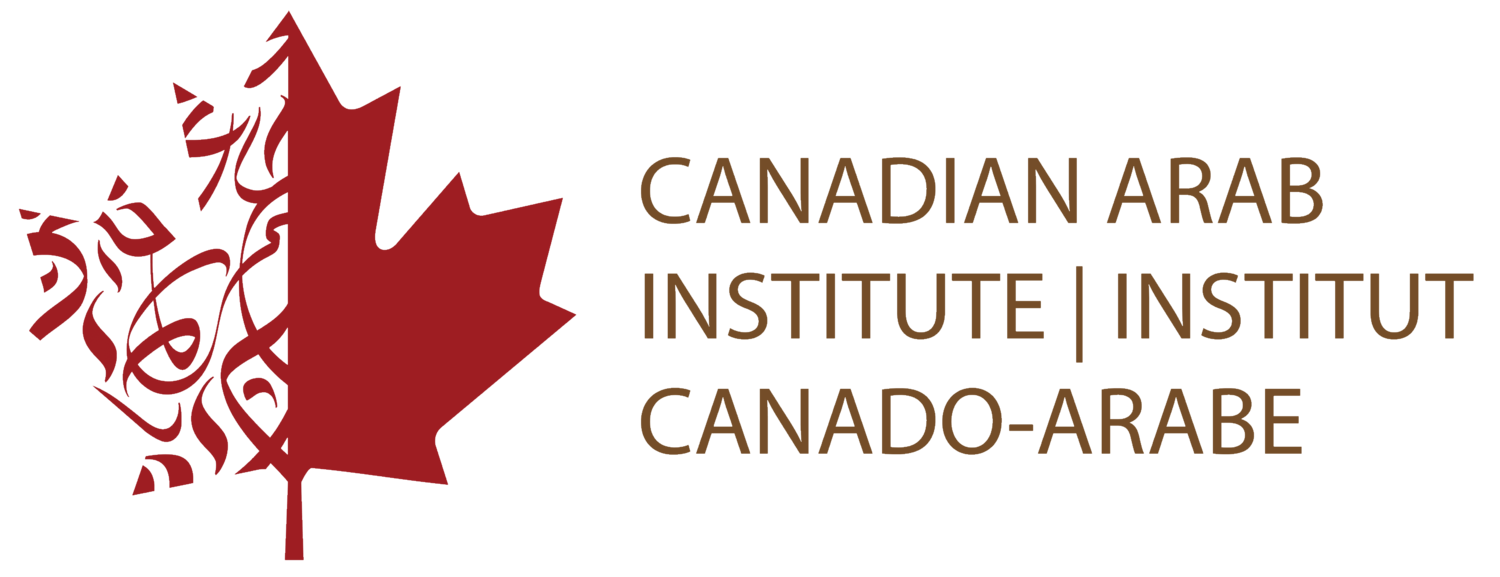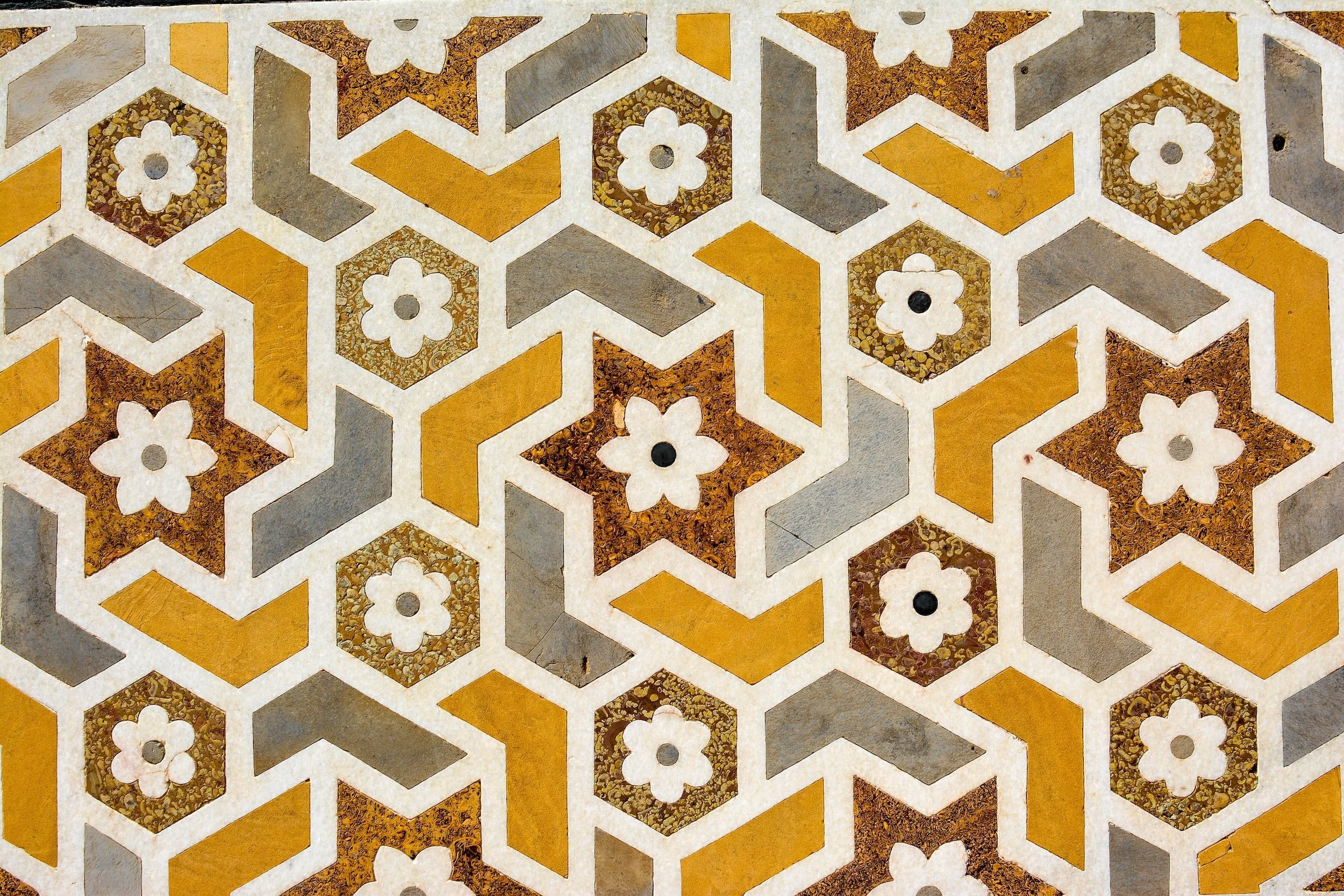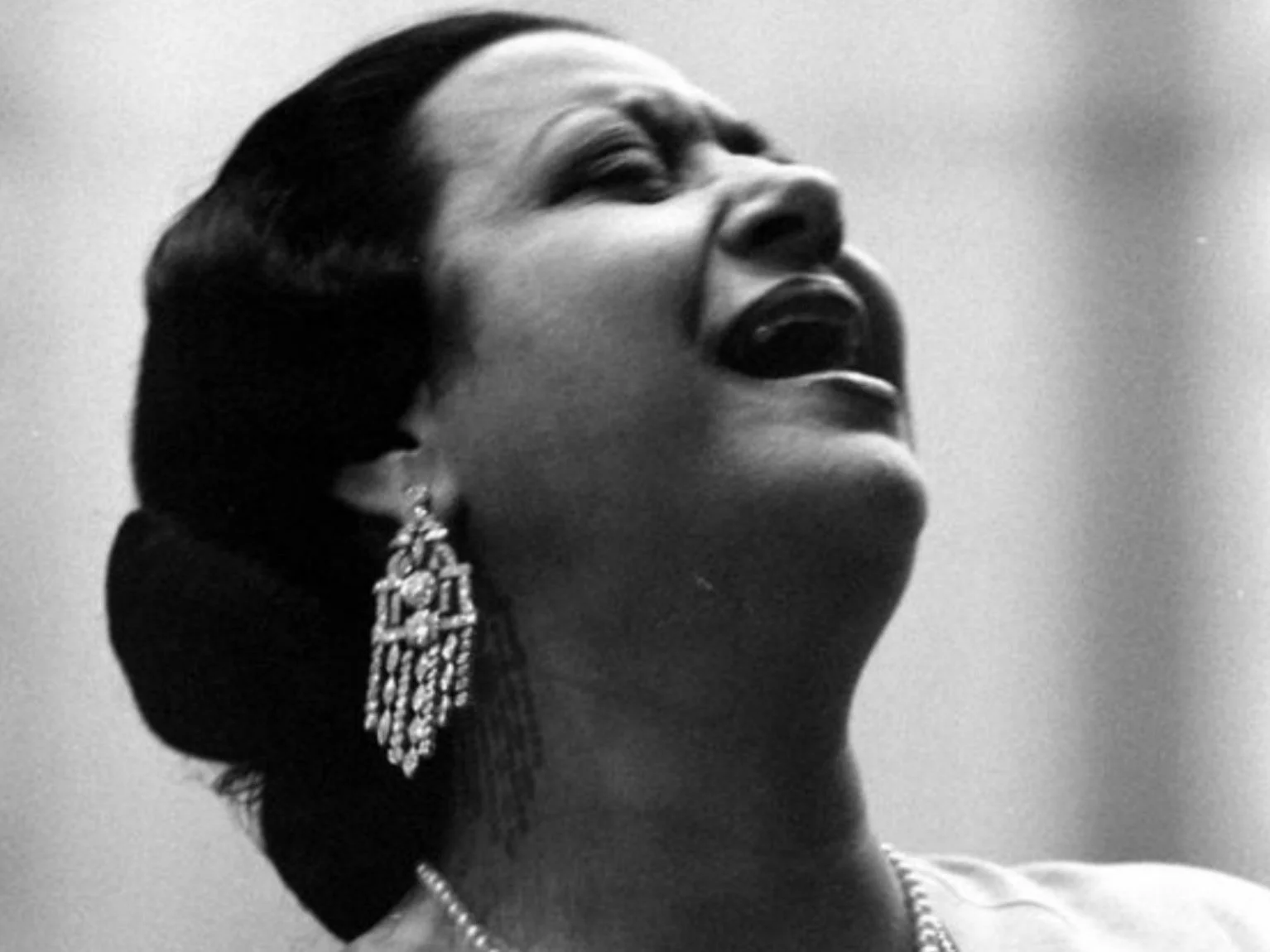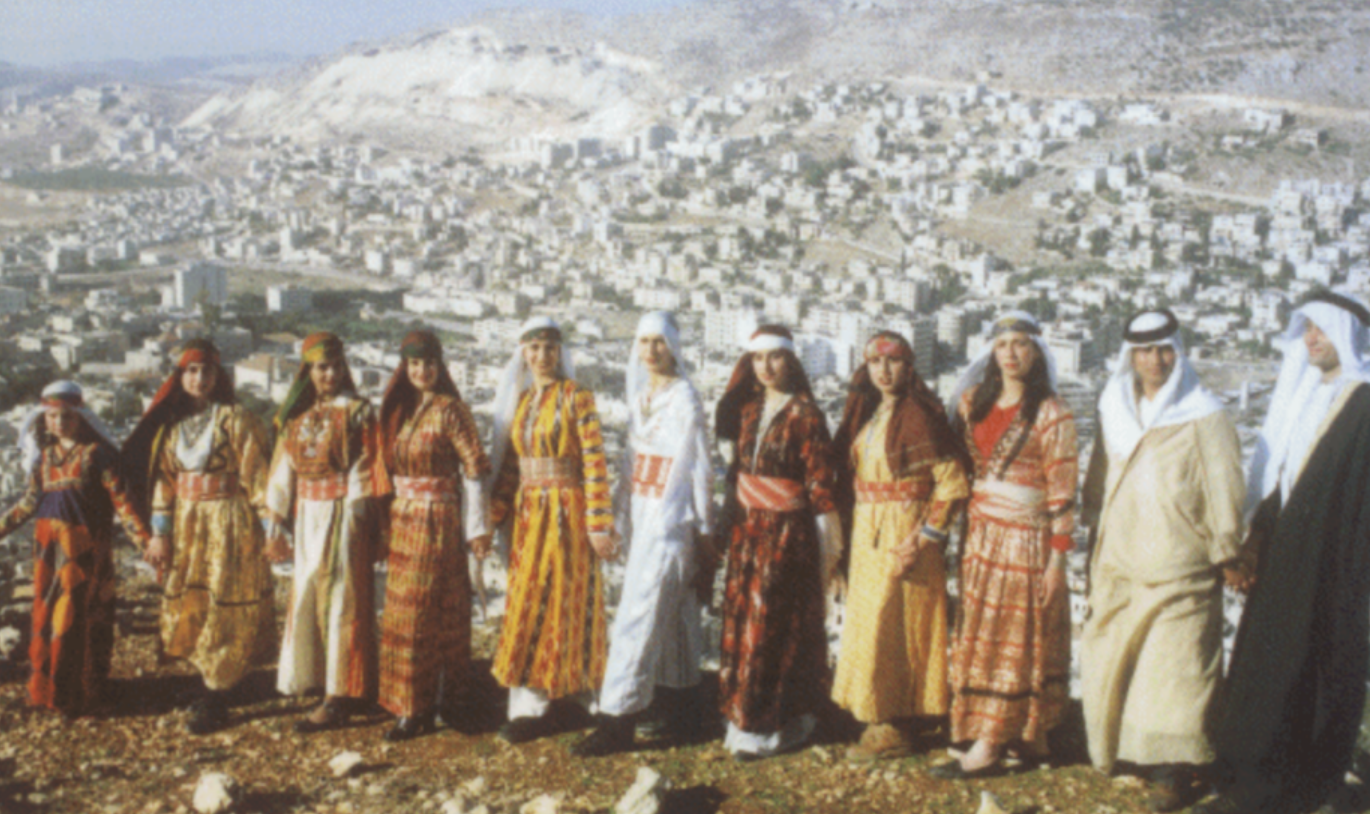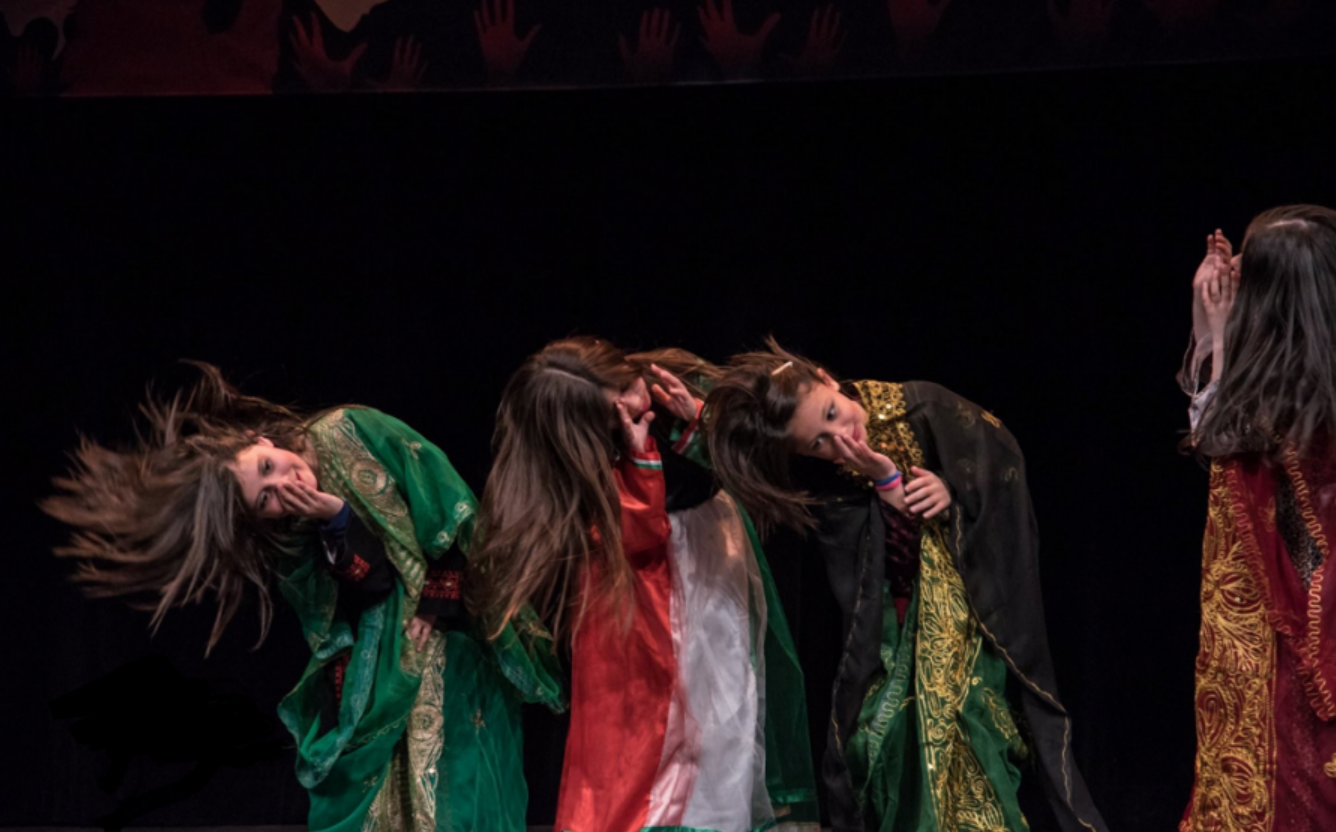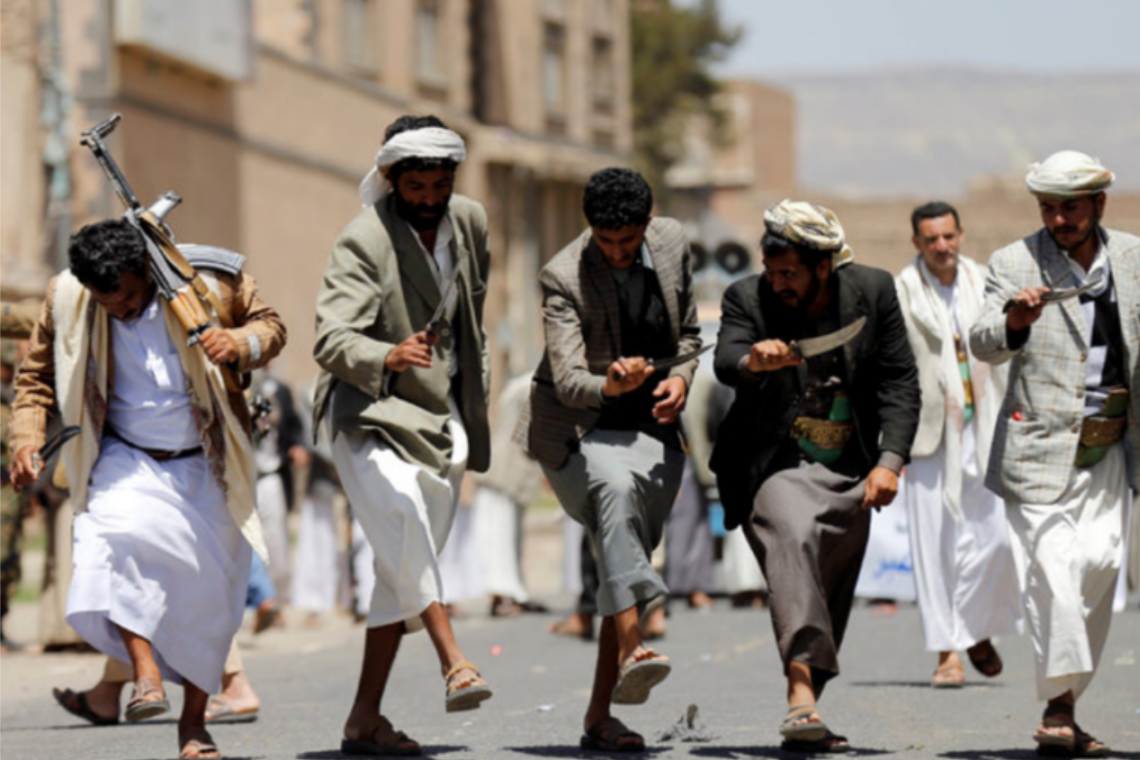CULTURES & TRADITIONS
There are several shared historical experiences as well as cultural and linguistic similarities (some of which are explored below) that unite the 23 countries identified as constituting the Arab world. However, it is important to recognize that this region is incredibly diverse and not at all homogenous. The sections below are dedicated to exploring some of the cultural similarities as well as cultural diversity that exists across the Arab world.
ART | MUSIC | FASHION | DANCE | POETRY | LANGUAGE
ART
The art of the Arab world is incredibly diverse with a rich and beautiful history. While there are centuries’ worth of art that can be celebrated and shared, we’ve gathered some of our favourite art pieces from the last century alone.
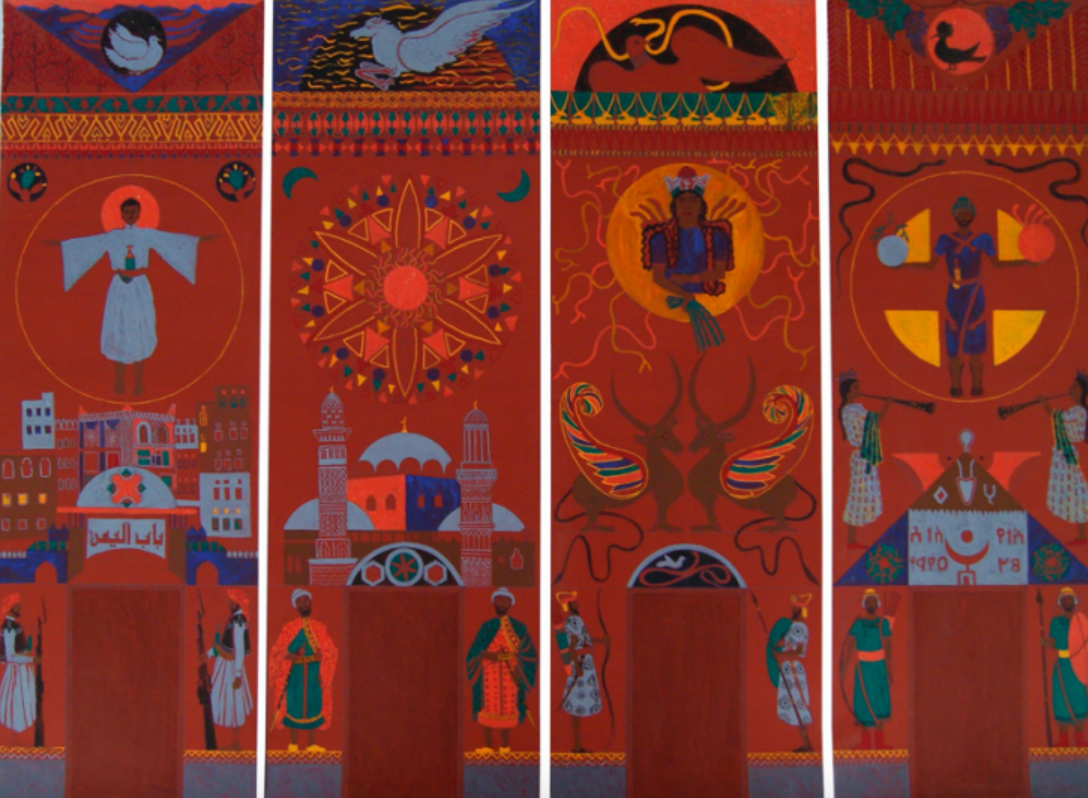
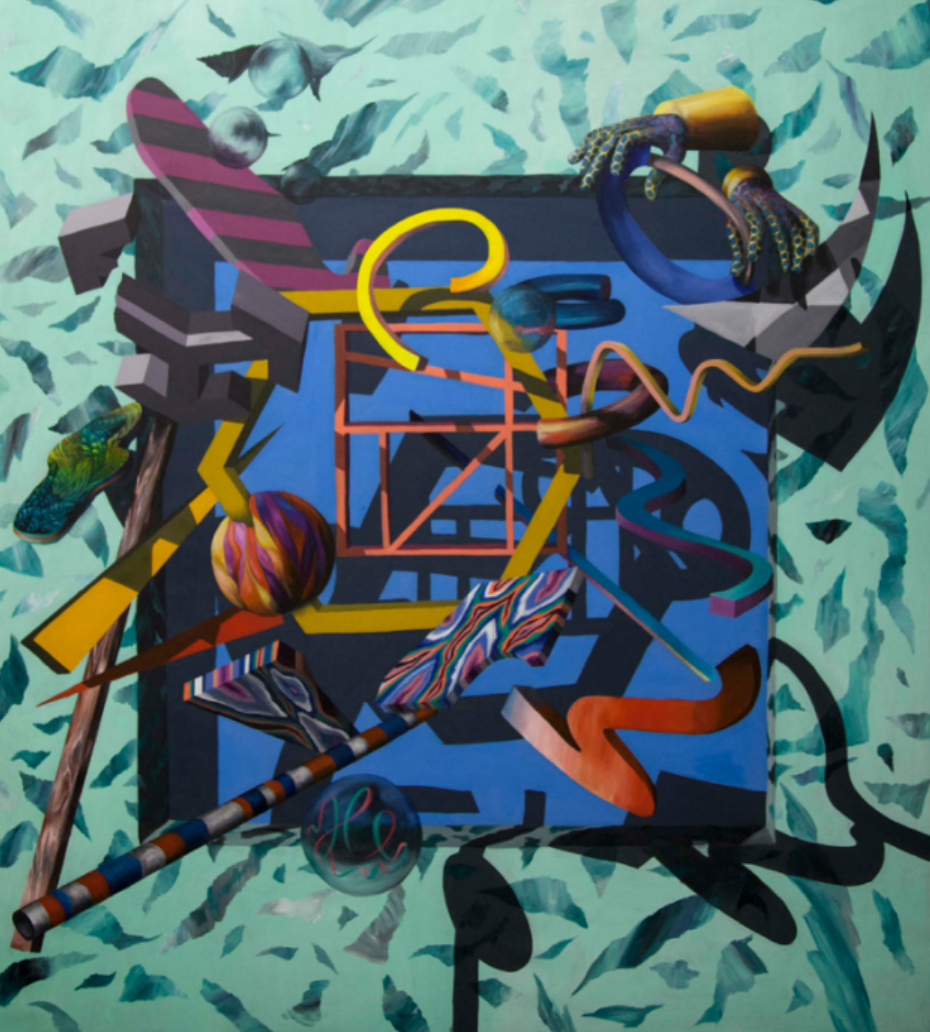
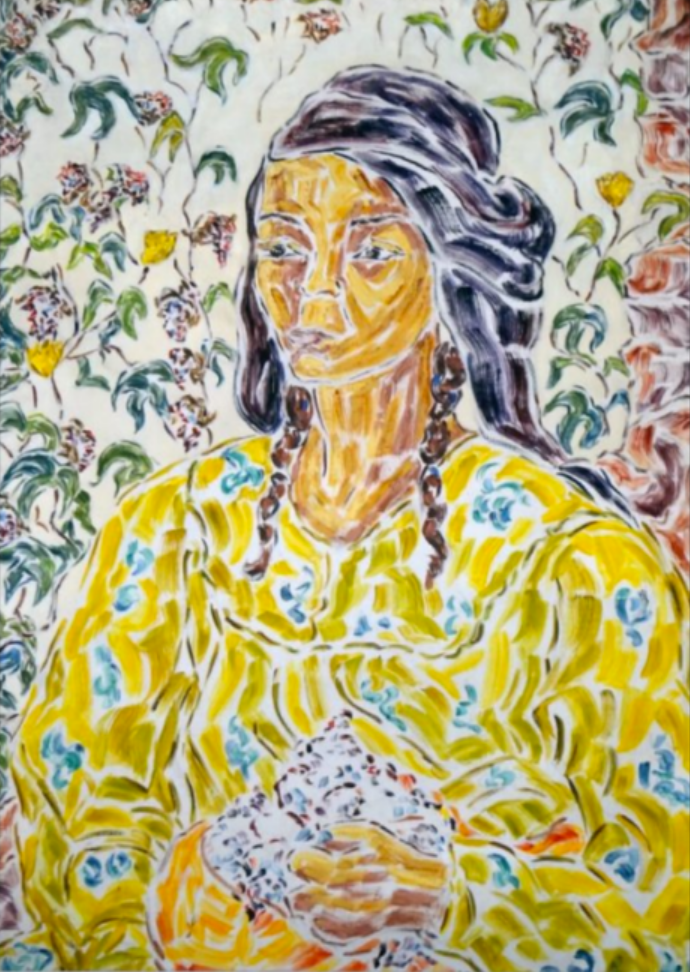
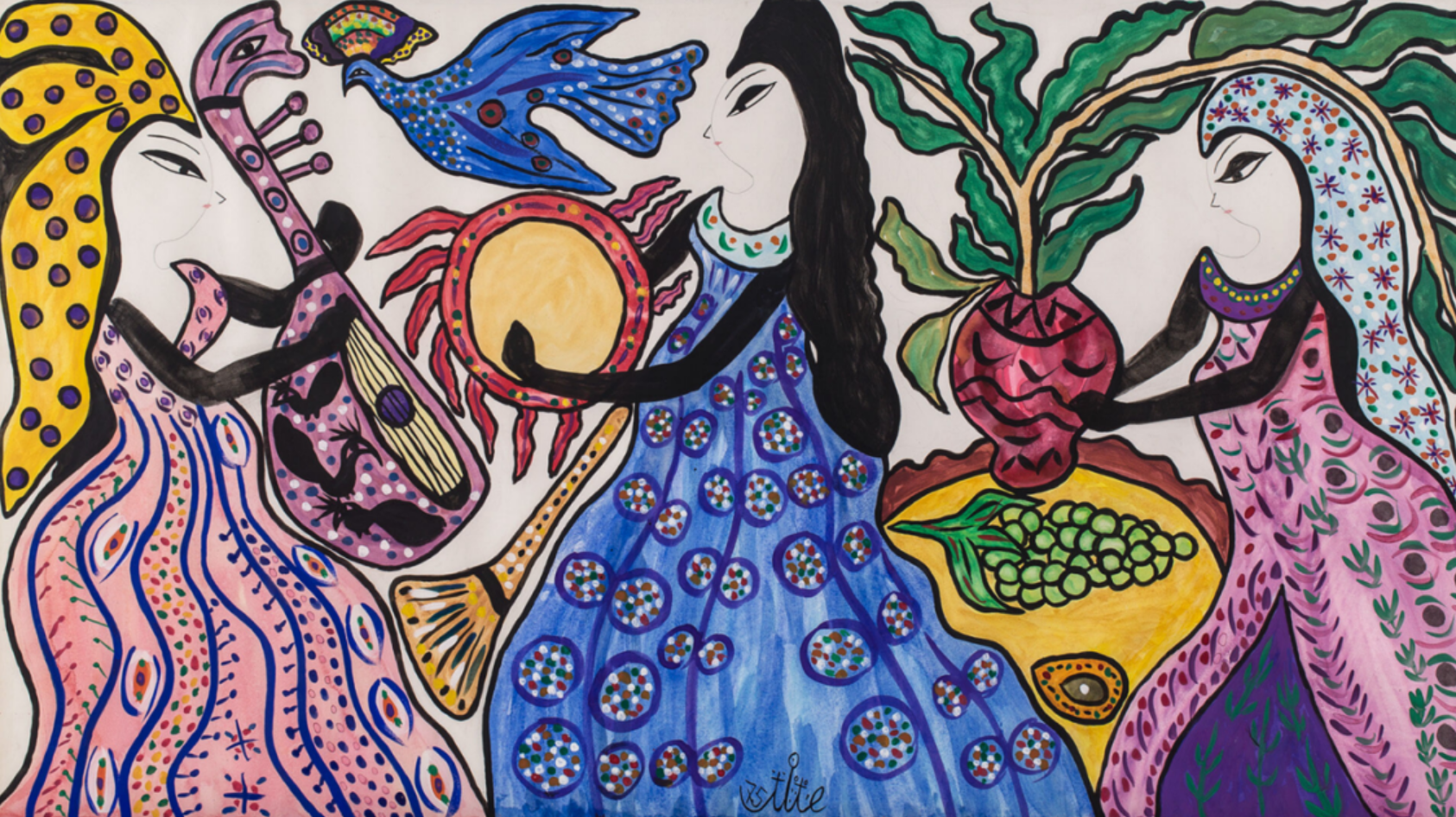
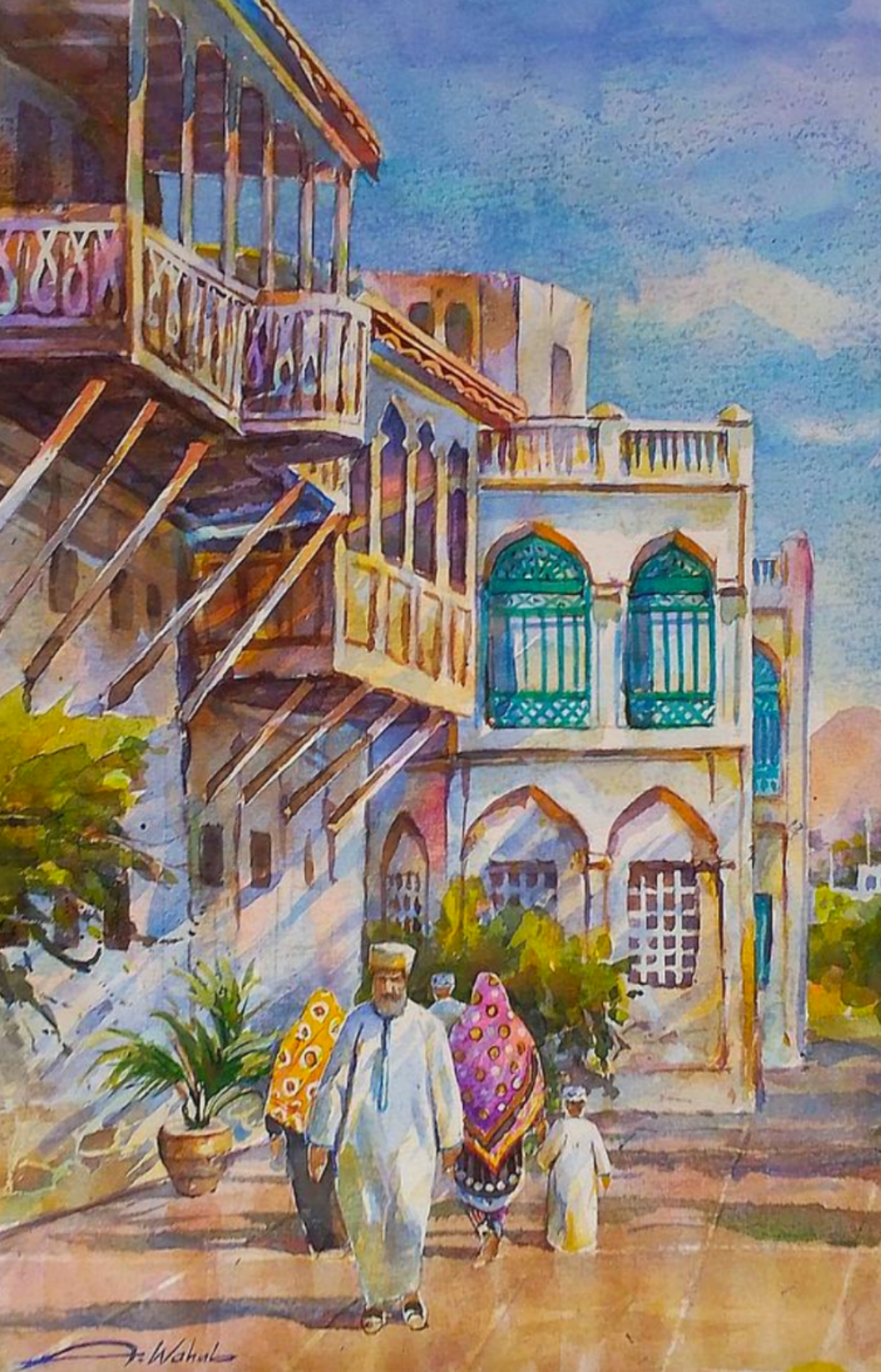
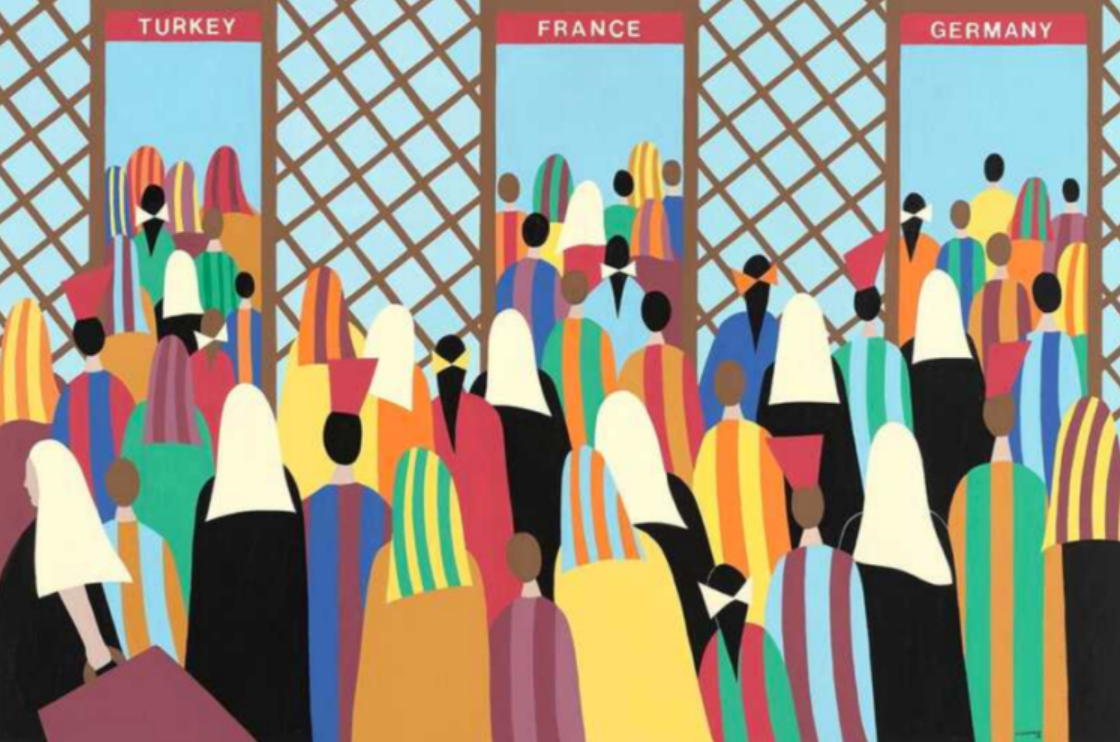
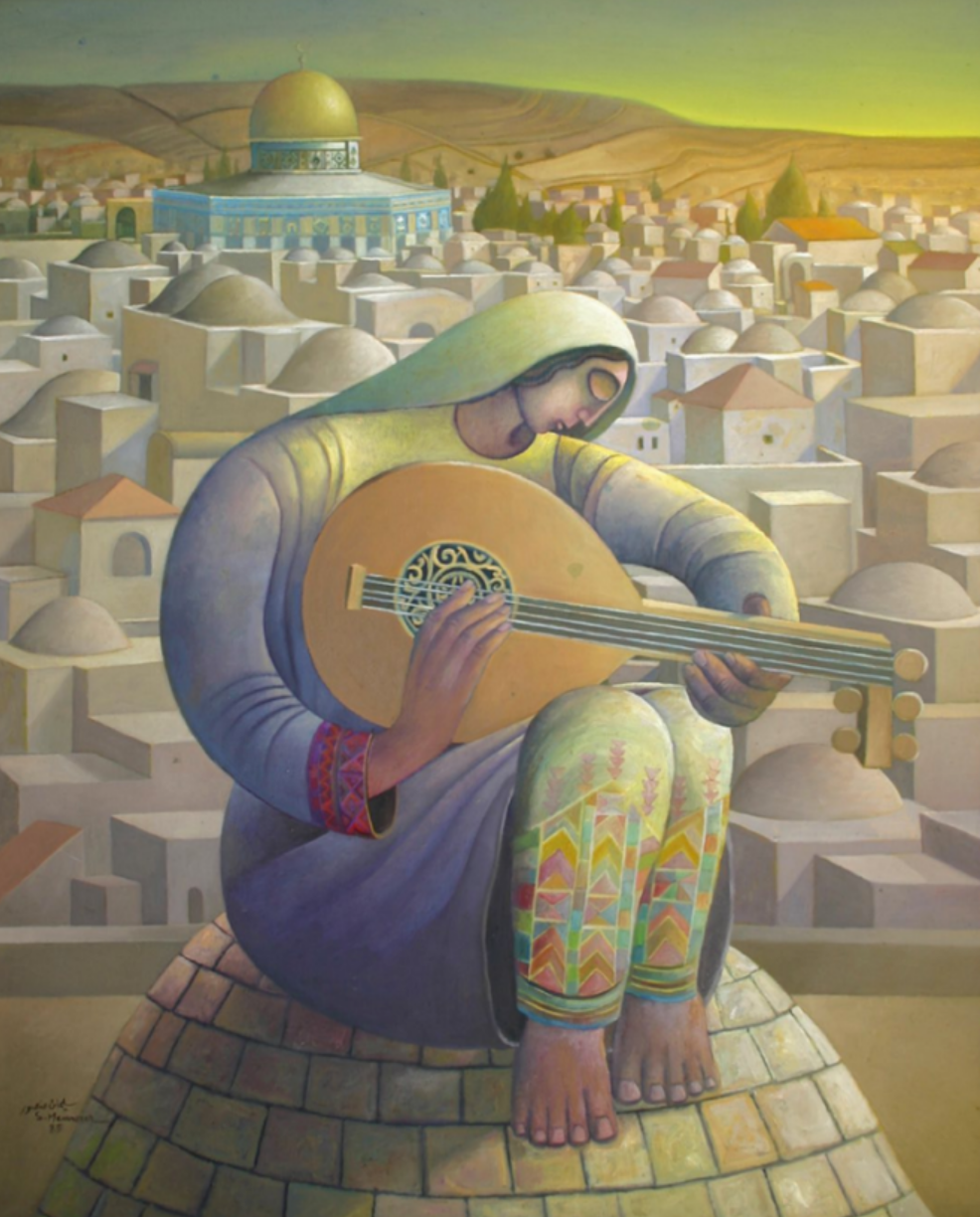

MUSIC
Arabs have an incredibly rich cultural and artistic tradition, to which music and musical folklore are absolutely critical. Here, we offer an exploration of some of the Arab world’s most beloved musical genres.
Dal’ouna
One of the most vocally challenging forms of Arab musical folklore is Dal’ouna, a traditional musical genre of the Levant region (Lebanon, Syria, Palestine, Jordan) and Iraq. Dal’ouna can be performed at various different occasions and is often accompanied by Dabke, a popular Levantine dance we shall explore in the next section.
Enjoy these powerful vocal performances and recordings of Dal’ouna by Palestinian singer Mohammed Assaf (below), Lebanese singer Najwa Karam, and Syrian singer Sabah Fakhri.
TARAB
Although each sub-region and country of the Arab world enjoys its own genres and rich musical traditions, it’s safe to say that millions of Arabs the world over hold a special place in their heart for Tarab, a pan-Arab, centuries-old, classical musical genre.
Since the beginning of the 20th century, Egyptian singers, composers, musicians, and poets such as Syed Darwish, Umm Kulthum, Abdel-Halim Hafiz, Mohammed Abdel-Wahab, Fayza Ahmed, Baligh Hamdi, Mohammed El-Asabgi, Riad Al-Sumbati, Ahmed Rami, Ahmed Shawqi, and others played a particularly influential role in the modernization and popularization of Tarab. Few would disagree that Umm Kulthum in particular was the most influential of all, as her concerts were broadcasted live on radio across all of North Africa and the Middle East on the first Thursday of every month for nearly 40 years. Each concert lasted several hours as millions of people gathered around in their homes and at coffee houses to tune in, relax, and enjoy the beautiful lyrics, vocals, and melodies.
OM KOLTHOUM
Nightingale of the Nile, June 1st, 1962 concert, photographed by Howard Sochurek. Life Magazine
So what makes this genre so special? Tarab is known for the strong, enchanting, emotional effect it has on its listeners. In his article on Tarab, Kay Hardy Campbell writes, “At its heart, tarab is about musical affect and relationship: a deep emotional response by a listener that leads to a feeling of connection between listener and performer.” There are three main reasons why the genre has such a powerful effect on its audiences. First, the lyrics are/were often written by the most distinguished poets of the Arab world, such as Ahmed Shawqi (known as the prince of poets), Ahmed Rami, Bayram al-ˇTūnisī, Joseph Harb, Nizar Qabbani, among many others. Whether the songs they wrote were romantic, nationalistic, religious, or otherwise, these poets and others like them always knew how to evoke the most powerful meanings with simple, careful word choice. Second, Tarab singers are known for their unique voices, which combine strength and power with softness, delicacy, and emotion. Third, Arabic music is one of the rare traditional musical styles of the world that contains Quartertones, which essentially means – without getting too deep into musical theory – that the Arab musical tone system is divided into 24 tones while the European musical tone system is divided into only 12, resulting in a completely unique musical experience.
FUN FACT: It’s said that Umm Kulthum was once told to sing while someone held a piece of glass close to her face. Her voice was so strong, it shattered the glass!
PLAYLIST: Abdel Halim Hafez – Gana El Hawa Concert | Mohammed Abdel Wahab – Kol Da Kan Leh | Asmahan – Emta Hata’raf | Farid Al-Atrash – El Rabie’ | Wadih El Safi – Al Laylo Ya Layla Performance | Nazem El-Ghazaly – Tal’a Min Beit Abouha Concert | Fairouz – Habaytak Bel Sayf Concert | Warda – Fe Yom we Leila Concert | Kazem El Saher – Hal Endaki Shak | Samira Said – Al Gany Ba’d Yomein
Raï
Out of the various musical genres of Algeria, Raï is arguably the most well-known internationally. Raï is an Algerian popular musical genre that emerged in the 1920s in the city of Oran. The most famous Raï singer is Cheb Khaled, whose songs have spread not only across North Africa and the Arab world but to international audiences as well.
Though less renowned internationally, Cheikha Rimitti was another iconic Raï singer who played a pioneering role in the genre and is now recognized as “the Queen of Raï” or “Mother of Raï.” Other Raï singers include Cheb Mami, Cheb Hasni, and Cheba Zahouania.
FUN FACT
Older generations of Raï singers, who sang more traditional styles of the genre, usually carried the name “Cheikh” (m.) or “Cheikha” (f.), meaning “leader” and usually denoting an older person, while younger generations with a more modern style chose to carry the titles “Cheb” (m.) and “Cheba” (f.), meaning “young.”
PLAYLIST: Cheikha Rimitti – Nouar | Cheb Mami - Lazrag saâni
Other musical genres of Algeria and North Africa: Hawzi, Kabyle, Chaoui, Chaabi (Algerian and Moroccan), Gnawa, Malhun, Gharnati, Gasba, Ma’luf, and more.
Take a listen to Raï song ‘Sahra’ by Chen Khaled
SAWT
Emerging in the 1800s, the Sawt genre is a traditional art form popular in Saudi Arabia, United Arab Emirates (UAE), Kuwait, and Bahrain, that relies heavily on various types of drums as well as the Oud. According to Kuwaiti musician and ethnomusicologist Ghazi Al Mulaifi, Sawt lyrics are often derived from old Iraqi poetry and literature as well as Classical Arabic poetry. This means that Sawt performers are incredibly skilled in the art of performing a captivating recitation of poetry.
Though decades apart, these two highly similar Sawt performances demonstrate the keen preservation of traditional music and culture by local musicians in Kuwait.
Local musicians (names unknown) – Ya Ain Maliya
Awadh Dokhi – Allah Ya Rabbah
FASHION
When it comes to fashion, there is certainly no shortage of beauty or an intricacy of details. Each sub-region of each country of the Arab world has its own unique traditional dress, some that have survived hundreds of years while others have emerged within the last century. Here, we’ve gathered some images of our favourite pieces!

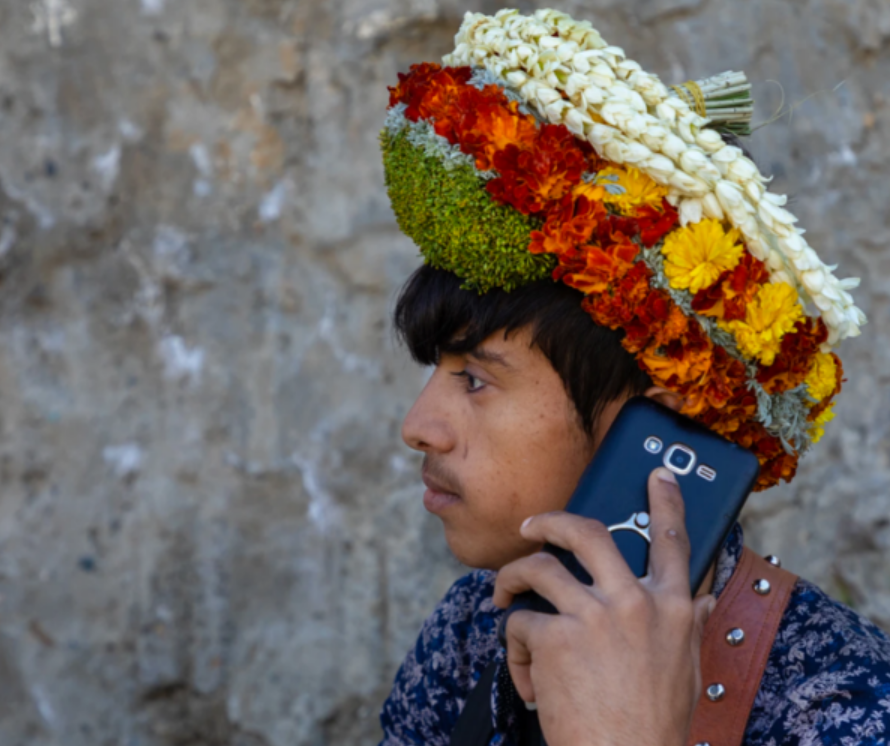
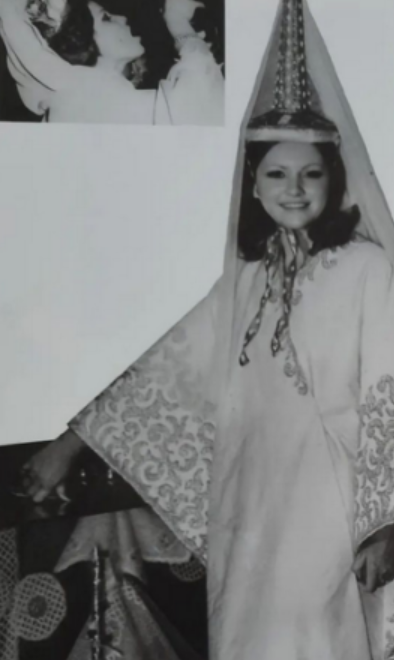
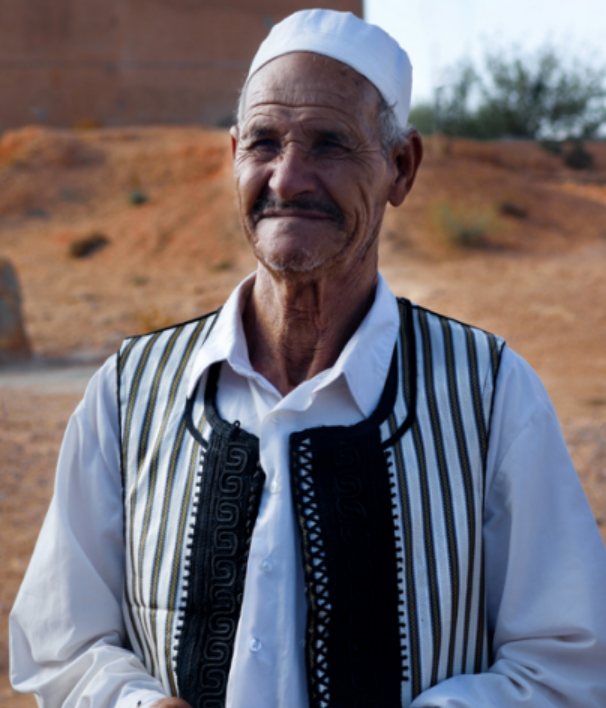
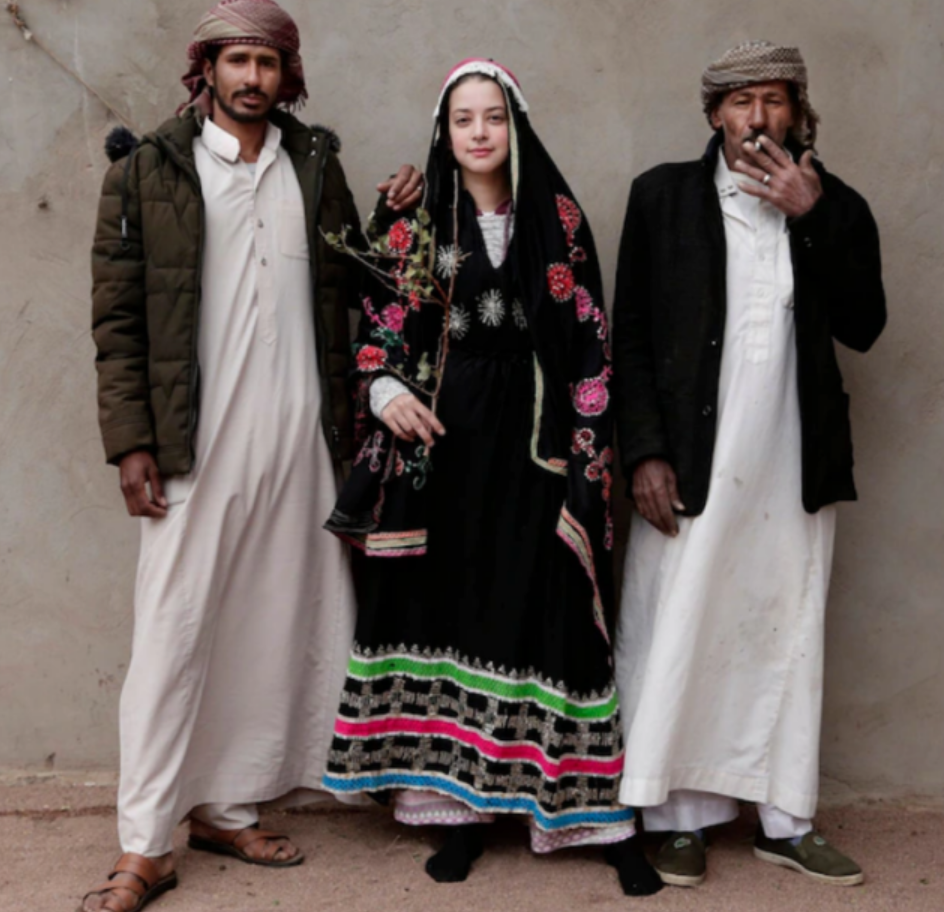

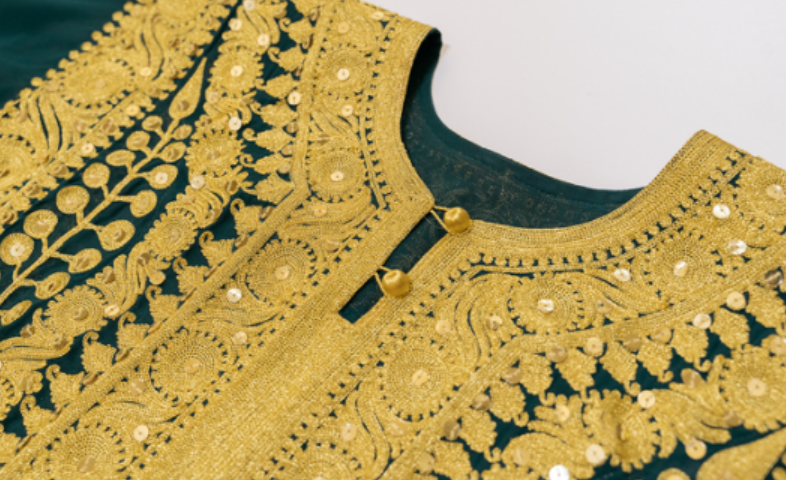
DANCE
Like its music, the Arab world is also host to a wide range of traditional dances, which sometimes accompany some of the musical genres explored and mentioned above. Here, we explore some of the most popular dances of the Arab world.
Dabke
Dabke is a Levantine folk dance popular across Syria, Lebanon, Palestine, Jordan, and Iraq with over 20 variations in style between and within each country. Holding hands or placing their arms on one another’s shoulders, Dabke dancers stand in either a line or semi-circle, performing a synchronized series of steps, hops, and jumps. Many Arab children of Levantine or Iraqi origin learn the dance from a very young age, since they often grow up watching their friends and family members spontaneously Dabke at any type of joyous occasion or gathering. Dabke is associated with a very unique musical style that centers the tabla and the mijwiz, among other instruments.
Here are some of our favourite Dabke performances for you to enjoy!
Tahteeb
Popular in Upper Egypt (Al-Saied), Tahteeb is a martial art which can also be performed as a dance. Rooted in Ancient Egyptian military traditions, Tahteeb involves the use of a long stick or cane. When practiced as a martial art, it consists of two adversaries waving their canes in the air and striking their own cane against that of their opponent in a repetitive, figure-eight motion. The sport is usually accompanied by music and is performed in front of an audience at various events. When performed as a dance, dancers usually maintain the striking of canes in their performance while including additional elements such as a choreographed series of steps and jumps and/or the spinning and twirling of multiple canes at once.
FUN FACT: Some athletes in Egypt are working to get Tahteeb recognized as an official Olympic sport! Read more about it here.
Watch a performances of Tahteeb here:
Khaleejy
Literally meaning, “Gulf”, in Arabic, Khaleeji is a dance that incorporates folk dances from Saudi Arabia, United Arab Emirates, Qatar, Kuwait, Oman, and Bahrain. The dance is usually performed by women wearing bright, colourful, traditional clothing. While dabke focuses more on an intricate series of steps and stomps, Khaleeji dancing is more focused on arm movements and sways as well as hair flips from one side to the other.
Watch some performances of Khaleejy here:
Bara’
The Bara’ dance, normally performed by men, is one of the many traditional folkloric dances of Yemen and Oman. According to Yemeni scholar Aly Al-Mohamady, the dance finds its origins in ancient Yemeni military practices, particularly in the North-Western region. Before battle, soldiers would perform the dance to prepare themselves mentally and emotionally. Today, Bara’ dancers step, hop, jump, and spin to the beat of the drum while wearing traditional clothing and holding either a small dagger, rifle, cane, stick, or items resembling weaponry, depending on the variation of the dance.
Watch some performances of Bara’ here:
POETRY
From romantic themes to political themes to existential themes to various others, poetry in all its variations has been an integral component of Arab identity and cultural expression for more than a thousand years. At the height of the Arab and Islamic Golden Ages (which lasted from the 8th century to the 13th century), countless volumes and collections of poetry were produced, much of which, unfortunately have been lost. Nevertheless, modern Arab poets continue to be inspired by their poetic predecessors until today, preserving the beautiful melodic, expressive, artistic spirit of the Arab world. Here, we’ve gathered two poems by modern Arab poets.
“Enough For Me”
By Fadwa Touqan, translated by Michael R. Burch
Enough for me to lie in the earth,
to be buried in her,
to sink meltingly into her fecund soil, to
vanish ...
only to spring forth like a flower
brightening the play of my countrymen's
children.
Enough for me to remain
in my native soil's embrace,
to be as close as a handful of dirt,
a spring of grass,
a wildflower.
“If a People One Day Desires to Live”
By Aboul-Qacem Echebbi, translated by Elliot Colla
If, one day, a people desires to live,
then fate will answer their call.
And their night will then begin to fade
and their chains break and fall.
For he who is not embraced by a passion for life
will dissipate into thin air,
At least that is what all creation has told me,
and what its hidden spirits declare…
LANGUAGE
Perhaps the most obvious factor uniting all Arabs is their shared language: Arabic. While there is a classical form of Arabic, known as fus-ha or Modern Standard Arabic (MSA), that is used across the Arab world for official documents, classical texts, news reporting, and all formal forms of communication, each sub-region also has its own colloquial dialect used in everyday speech and informal communication. The following dialect map indicates the linguistic diversity that exists not only between different countries but also within each Arab country.
Figure 1: Map of Varieties of Arabic: Wikimedia Commons
So what does this mean? While there are certainly countless words and expressions that remain consistent across the Arab world, there are also quite a few words that are almost unrecognizable when one moves from one sub-region to the next. Let’s look at some examples:
Words Shared Across the Arab World
Good Morning
o While there are different ways to offer a morning greeting in Arabic, the most popular iteration, Sabah-el-kheir/ ریخلا حابص, is used and understood across the Arab world, from Morocco to Sudan to Palestine to Saudi Arabia to Iraq, and more.
Let’s Go/Hurry Up
o Perhaps one of the most famous Arabic words used by all nationalities, Yalla/ لای , is a versatile word used to tell someone to get started on something, to hurry up, to move along, or to get going.
God Willing
o Used by Muslim, Christian, Druze, and other Arabic-speaking religious groups alike, InshaAllah/ نإ ءاش الله , literally means “if God wills” and is usually used when discussing upcoming or future plans.
Words That Differ Across the Arab World
Very/A lot
• Modern Standard Arabic (MSA): Jiddan/ ادج) very) or Katheer/ ریثك) a lot)
• There are various iterations of the word “a lot” or “very” that appear in different parts of the Arab world, some of which resemble MSA while others do not.
The following is a list of just some variations:
o In Morocco and Algeria: Bezzaf/ فازب
o In Tunisia: Barsha/ اشرب
o In Libya: Halba/ ةبلھ
o In Egypt: Awi/ يوأ /Gawi/ يوج) depending on region) or Geddan/ ادج
o In Sudan: Shadeed/ دیدش
o In the Levant (Syria, Lebanon, Palestine, Jordan): Kteer/ ریتك
o In Saudi Arabi: Marra/ ةرم
o In Kuwait, Qatar, and United Arab Emirates (UAE): Wayed/ دیاو
o In Iraq: Kullish/ شلك or Hwaya/ ةیاوھ
FUN FACT: Egyptian artist Tamer Hosny celebrates the different dialects of the Arab world by mixing them all into one song, titled Kol El-Lahgat/In All Dialects. Take a listen to the chorus and see which variations of “very/a lot” you recognize from the list above!
How Are You?
• Modern Standard Arabic (MSA): Kayf Halluka? / (masculine [m.]) or Kayf Halluki? (feminine [f.]) / فیك ؟كلاح
• When it comes to “How Are You?” we find that while some countries’ iterations are similar to the MSA form, with slight variations in pronunciations, others use entirely different words altogether:
o In Saudi Arabia: Keif ‘Halak? (m.) / Keif ‘Halik? (f.) / فیك ؟كلاح
o In the United Arab Emirates (UAE): Ish’Halak? (m.) / Ish’Halik? (f.) / كلاح شیإ ؟
o In Tunisia: Shnahwalak? (m.) / Shnahwalek? (f.) / ؟كلاوحنش or La bas? ؟ساب لا /
o In Sudan and the Levant (Syria, Lebanon, Palestine, Jordan): Keefak/Kefak? (m.) / Keefik/Kefik? (f.) / ؟كفیك
o In Iraq, Bahrain, and Kuwait: Shlonak? (m.) / Shlonek? (f.) / ؟كنولش
o In Morocco: La bas? / لا ؟ساب or Ki Dayer? يك ؟ریاد) Depending on region)
o In Egypt: Ezayak? (m.) / Ezayek? (f.)
PROVERBS
Every culture and region of the world has a rich repository of proverbs that have been passed on from one generation to the next, and the Arab world is no different. Like its dialects, the proverbs of the Arab world can sometimes be found consistently across various countries, or are unique to specific countries or sub-regions. Here are some of our favourites:
Proverb #1: El erd fi 3eyn omo ghazal / نیع ھمأ لازغ يف درقلا
Translation: “The monkey appears as a gazelle in his mother’s eyes.” In other words “A mother always sees the best in her child”
Meaning: Beauty is in the eye of the beholder
Found in: Egypt, Sudan, Syria (with minor differences in pronunciation)
Proverb #2: Ila kan sahbak ‘asal la tla3koush kolo/ لا ناك كبحاص لسع لا شوكعلط ولوك or نإ ناك كبیبح لسع ام شوسحلت ھلك / kolo telhasoush ma asal ‘habibak kan In
Translation: “If your friend/loved one is made of honey, don’t lick all the honey”
Meaning: If someone is kind to you, don’t take advantage of them
Found in: Morocco, Saudi Arabia, Yemen, and Egypt (with differences in wording [friend/loved one] and pronunciation)
Proverb #3: ‘Ala ad bisatak mid ijrek / ىلع دق كطاسب دم كیرجا or ‘Ala ad lhafak mid كیلجر دم كفاحل دق ىلع / reglek
Translation: Extend your legs based on [the length] your rug / Extend your legs based on [the length] of your blanket
Meaning: Live within your means
Found in: The Levant (Lebanon, Palestine, Syria, Jordan) and Egypt (with minor differences in pronunciation and wording)
Regardless of where you travel in the Arab world, you’ll likely come across hundreds and hundreds of similar proverbs, revealing local gems of wisdoms and a unique sense of humour!
WE’D LOVE TO HEAR FROM YOU!
Please take a quick survey to let us know the value of our Arab Knowledge Hub and how you will use the information learned here.
Your time and feedback are much appreciated!
